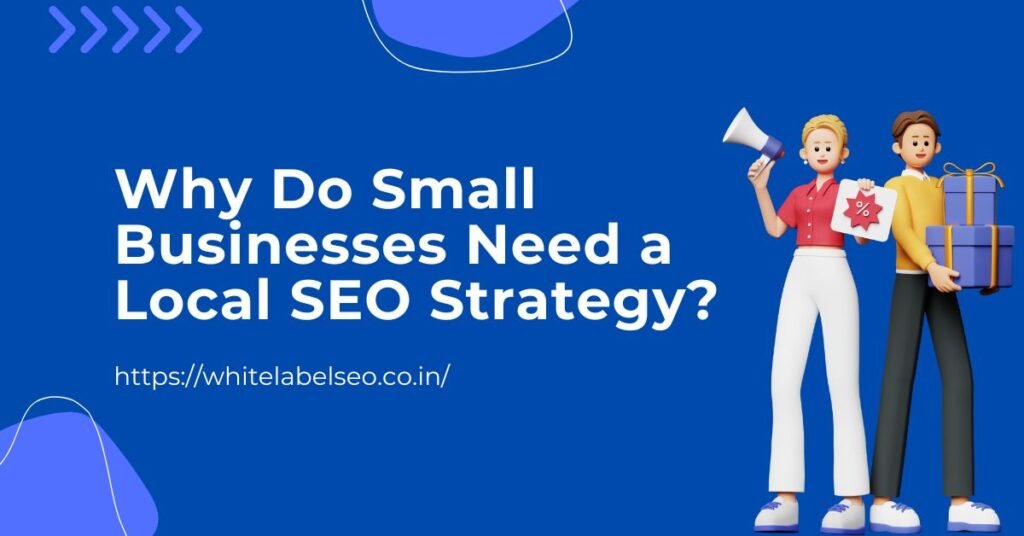Think about the last time you needed a nearby service. You searched, skimmed the top results, and chose the one that looked trustworthy and easy to contact. That quick decision repeats again and again for potential customers.
A local SEO strategy places your business in front of those people at the exact moment they’re ready to act. It helps them find you, understand what you offer, and choose you with confidence.
Local SEO isn’t a mystery. It’s a set of simple, repeatable actions: keep your information accurate, make your pages helpful, gather reviews, and measure what’s working. With steady effort, even a small team can compete with bigger players.
What “Local SEO” Means for a Small Business
Map results, local organic results, and why both matter
Search results often show two sections: the map pack with top businesses, ratings, and quick actions, and the local organic listings linking to full websites. The map drives fast calls or visits, while organic results help customers research further.
Appearing in both boosts trust and bookings, and working with an Affordable white label SEO company can help you secure visibility in both areas.
Proximity, relevance, and prominence made simple
Search engines consider proximity (how close you are), relevance (how well you match the search), and prominence (your reputation).
You can’t control location, but accurate info, useful pages, and regular reviews can raise relevance and prominence.
Core Building Blocks of a Local Strategy
Google Business Profile your online shopfront
Your Google Business Profile is often the first thing people see. Complete all sections, add clear photos, post updates, and keep hours accurate.
This helps customers act quickly and signals to search engines what you offer. On your site, include a “How to find us” page with a map, parking tips, and accessibility info.
NAP consistency and citations across the web
Keep your Name, Address, and Phone the same everywhere website, profile, and directories. Even small differences can cause confusion. Review and update listings regularly.
Local keywords and pages that match intent
Build pages that match customer searches like “emergency repair” or “same-day appointment.”
Service pages should explain details and next steps, location pages should make visiting easy, and FAQ pages should answer common questions.
On-Page Optimisation That Actually Helps You Rank
Titles, metas, headers, and internal links
Keep titles short and clear, including the service and a benefit. Write concise meta descriptions that encourage action.
Use headers for easy scanning and link main service pages to resources like FAQs or “what to expect” pages.
Location pages, FAQs, and service detail pages
Have clear location pages, detailed service pages, and helpful FAQs. A “what to expect” page can guide customers and reduce hesitation.
Schema markup for local businesses
Use LocalBusiness schema to highlight key details like name, contact, hours, and services, helping search engines read your site more effectively.
Speed, Mobile, and Technical Basics
Fast load times and Core Web Vitals
Slow pages send people away. Compress images, remove heavy scripts you don’t need, and keep layouts simple.
Aim for quick first loads and smooth interactions. Faster pages often see better engagement and stronger conversion rates because people don’t give up waiting.
Mobile usability and clean site structure
Most local searches happen on phones. Make it easy to call with one tap. Keep forms short. Use readable fonts and clear spacing.
A clean menu and simple structure help both users and crawlers. If someone can reach your key pages in one or two taps, you’re on the right track.
Reviews, Ratings, and Real-World Reputation
Getting more good reviews the right way
Ask for reviews after positive experiences and provide a direct link to make it easy. Even short, honest feedback builds trust and keeps your listing active. One business doubled reviews in a few months simply by adding a friendly reminder after each job.
Replying to reviews and learning from them
Respond politely to all reviews, thank happy customers and address issues calmly. Look for patterns in feedback to improve services and update FAQs where needed.
Content That Wins Local Searches
Helpful guides, before/after stories, and checklists
Create content that solves problems, like guides for preparation, before-and-after stories to show results, or checklists to ease anxiety.
Keep it simple, use plain language, and add photos when useful to help people feel ready to reach out.
Blog posts that answer local questions
Write short posts that address common questions or issues. Offer safe tips, comparisons, or advice, and link readers to relevant service or booking pages to guide them from learning to taking action.
Tracking Results and Improving Over Time
What to measure weekly and monthly
You don’t need complex dashboards to keep score. Track calls from your profile, direction requests, and bookings. Review the top pages on your site each month and note which ones lead to contact.
Watch search queries in your analytics tools to see which services people want. A simple spreadsheet will do. Record numbers weekly and look for patterns.
Turning insights into next steps
If a page draws visits but few enquiries, check a few basics. Is your phone number easy to tap? Is there a clear “Book now” or “Request a quote” button above the fold?
Do you explain price ranges and time frames in plain language? Add a short “what happens next” section to reduce doubt. Make one change at a time, give it a couple of weeks, and keep what works.
Supporting Details: Examples and simple stats-style comparisons woven throughout
Consider these quick examples.
A café updated profile photos weekly, posted short specials, and added an “order ahead” line to its site within a month, direction requests and foot traffic grew.
An electrician built clear service pages, shared a quick pre-call guide, and asked for reviews after each job, boosting trust and weekend calls.
A clinic added a “what to expect” page, a map on its contact page, and short testimonials, leading to longer visits and more bookings. The common thread: clear info, useful pages, and steady reviews drive lasting results.
How Professional Help Fits In (Without the Hype)
You can handle the basics yourself: complete your Google profile, align NAP details, build key pages, and ask for reviews.
If you want a faster start or need technical fixes, a reliable partner can help with audits, on-page improvements, content planning, and measurement.
Agencies such as White Label SEO can provide that support while you focus on serving customers and keeping operations smooth.
Ask for a short monthly plan that lists tasks, timelines, and the one or two numbers that matter most usually calls and bookings.

Where Local SEO Services Fit in Your Weekly Routine
A sustainable routine keeps your momentum without eating your calendar. On the first day of the week, upload one fresh photo to your profile and check that your hours and contact options are current.
Mid-week, ask two happy customers for a quick review with a direct link. Later in the week, update one page on your site: add a short FAQ, improve a paragraph, or include a photo that clarifies your process.
Before the weekend, glance at calls, direction requests, and top pages, and write a one-line note about what changed.
These tiny steps compound, and Local SEO Services become a normal part of how you operate, not a side project you dread.
Common Local SEO Myths And Simple Truths
Some think ranking once means staying there forever, but results change—fresh info, new reviews, and updates keep you visible.
Another myth is that only big brands can rank; in reality, clear pages and consistent signals help small businesses win daily.
Social media helps, but search captures customers at the moment they’re ready. A polished site matters, but reviews often tip the decision because they prove real-world service quality.
A Short, Repeatable Local SEO Checklist
Fill your Google profile completely with accurate hours and service details. Keep NAP data consistent everywhere. Build key pages like location, services, FAQs, and “what to expect.”
Ask for reviews weekly and respond to each. Keep your site fast and make calling easy on mobile. Track calls, directions, and bookings. Improve one small thing each week and record the results.
Mistakes to Avoid (So You Don’t Waste Time)
Don’t copy-paste text across multiple pages make each one useful. Avoid hiding prices, time frames, or steps. Use real photos instead of only stock images.
Keep mobile visitors in mind since most searches happen there. Don’t ask for reviews just once, make it a habit. And skip overcomplicated language; clear and simple works best.
How to Build Trust Fast on Your Pages
Put your phone number and a clear action button at the top. List regular and special hours in one spot. Add short testimonials with first names and a quick “how it works” section in three or four steps.
End with a mini-FAQ covering the most common concerns. These elements make people feel confident to reach out.
Internal Linking Opportunities You Can Add Today
Guide visitors smoothly through your site with a strong internal linking strategy that supports both user navigation and SEO. From the home page, link to your main service pages using keyword-rich anchor text to improve relevance for search engines.
From each service page, link to your FAQ and “what to expect” page to keep users engaged and reduce bounce rates.
From blog posts, link to relevant service pages to pass link equity and boost page authority. On your contact page, link to your location or “visit us” page with a map and directions, using local SEO terms to strengthen geographic relevance.
This creates a clear site structure that enhances crawlability, improves keyword targeting, and guides users from interest to conversion.
Conclusion
Local search decides who earns the next call or booking. With a clear strategy, small businesses can appear at the right moment, show they’re trustworthy, and make it easy for people to act.
Start by completing your Google profile, match each page to a real search, gather reviews every week, and keep your site fast and friendly on mobile. Track calls, direction requests, and top pages, then improve one small thing at a time.
If you want steady, practical support while you focus on serving customers, White Label SEO can help you keep the momentum.

